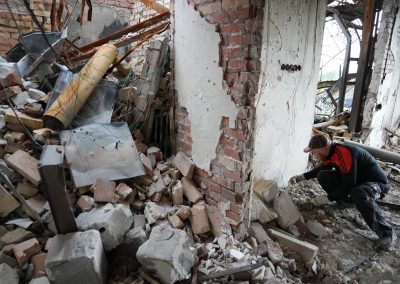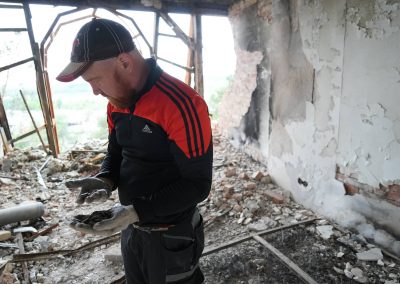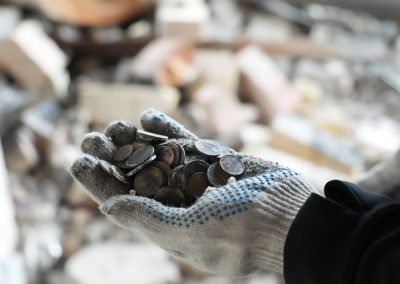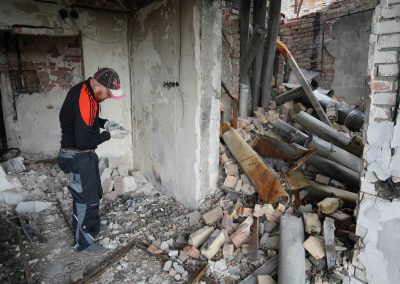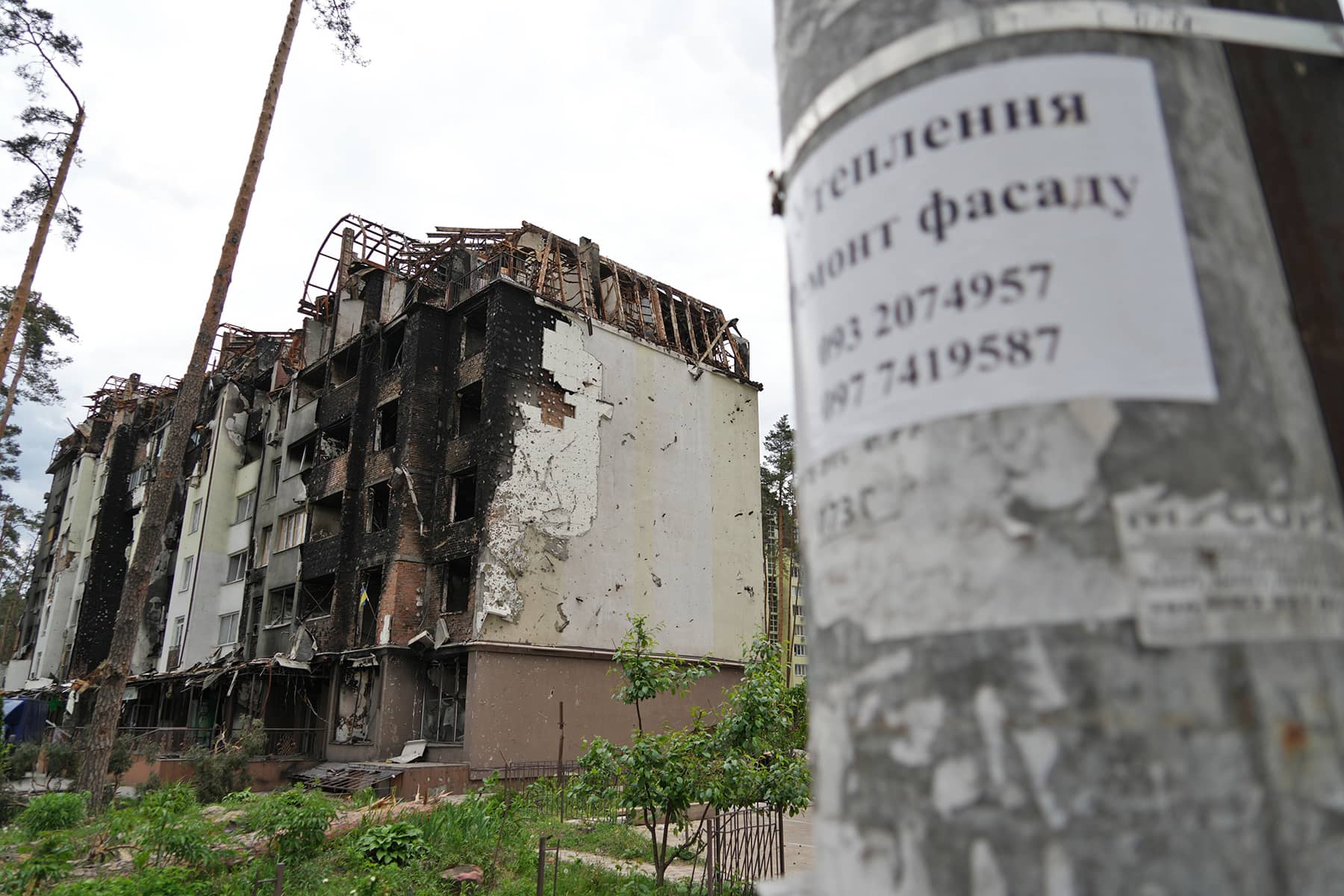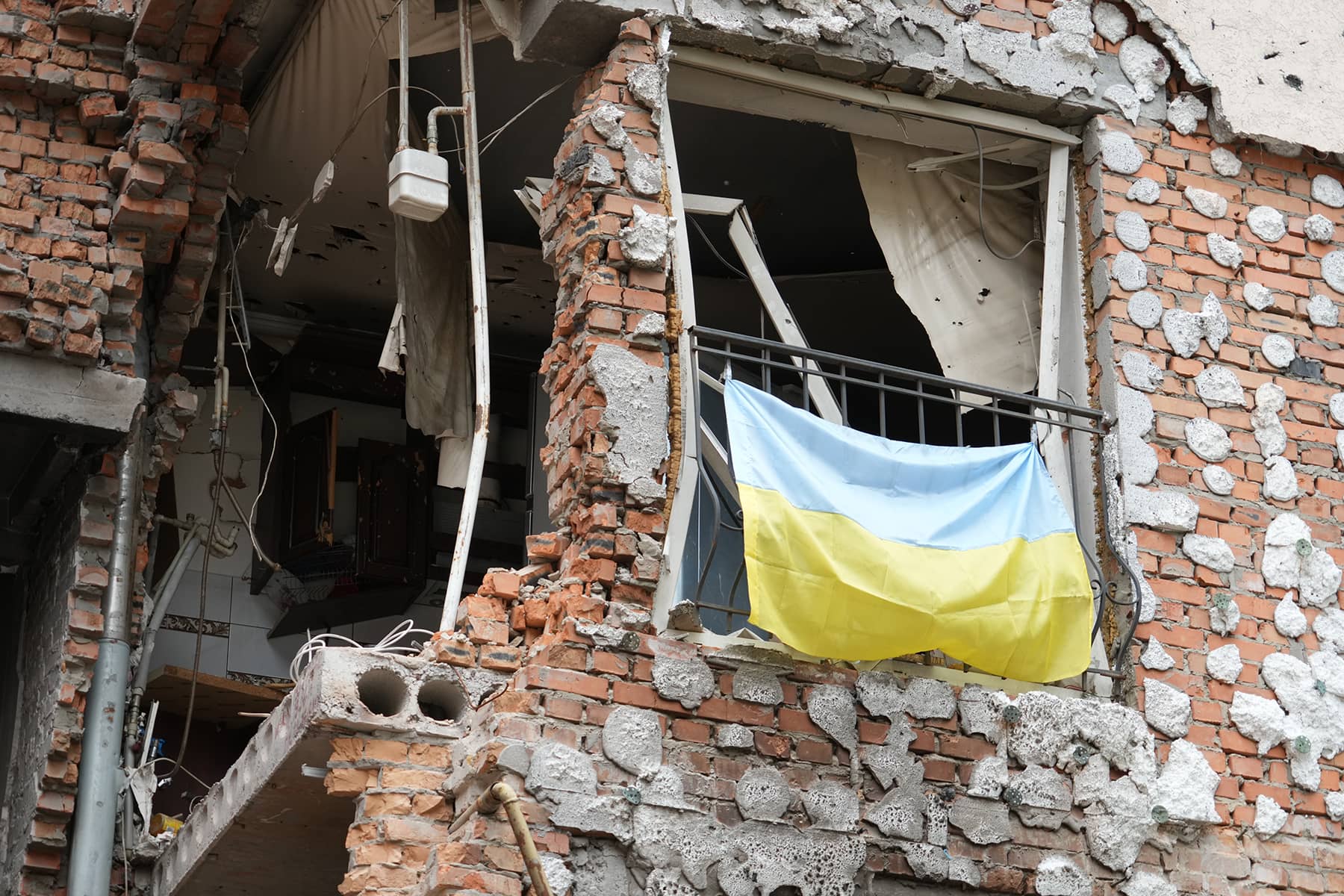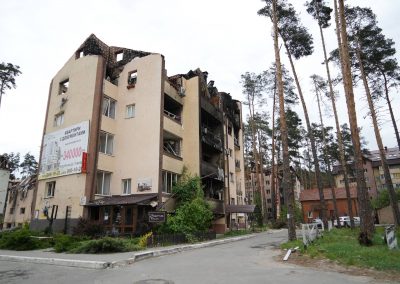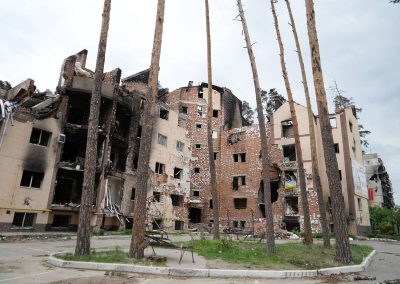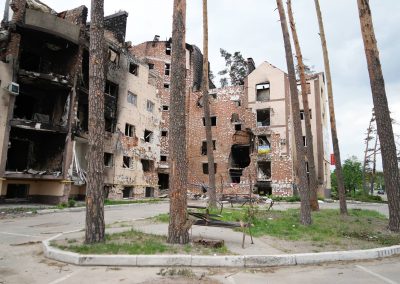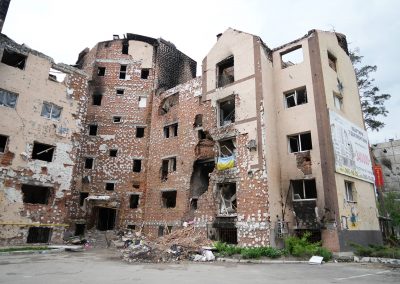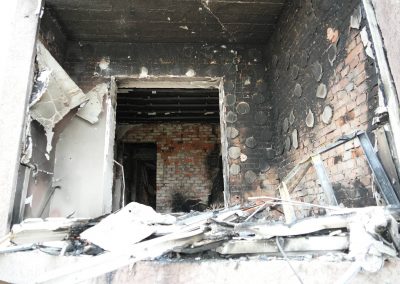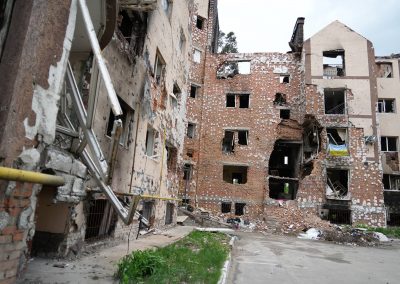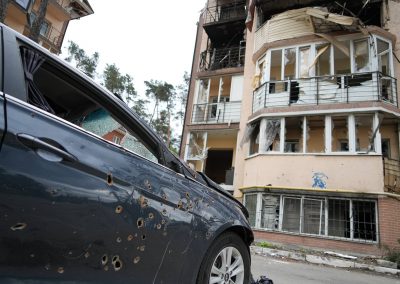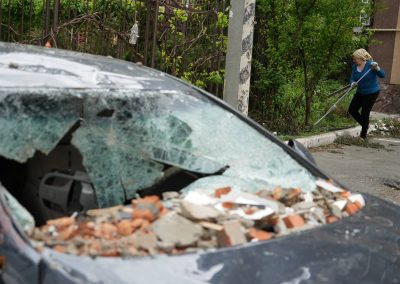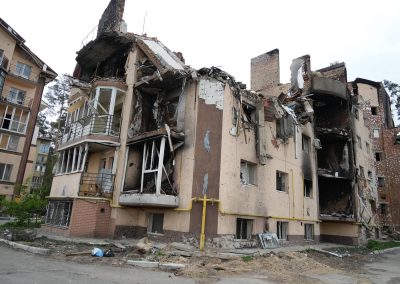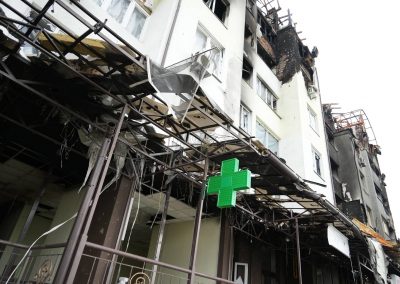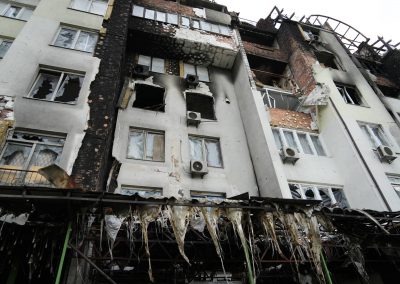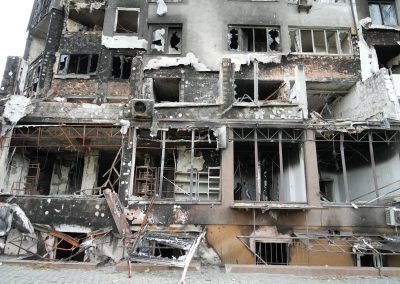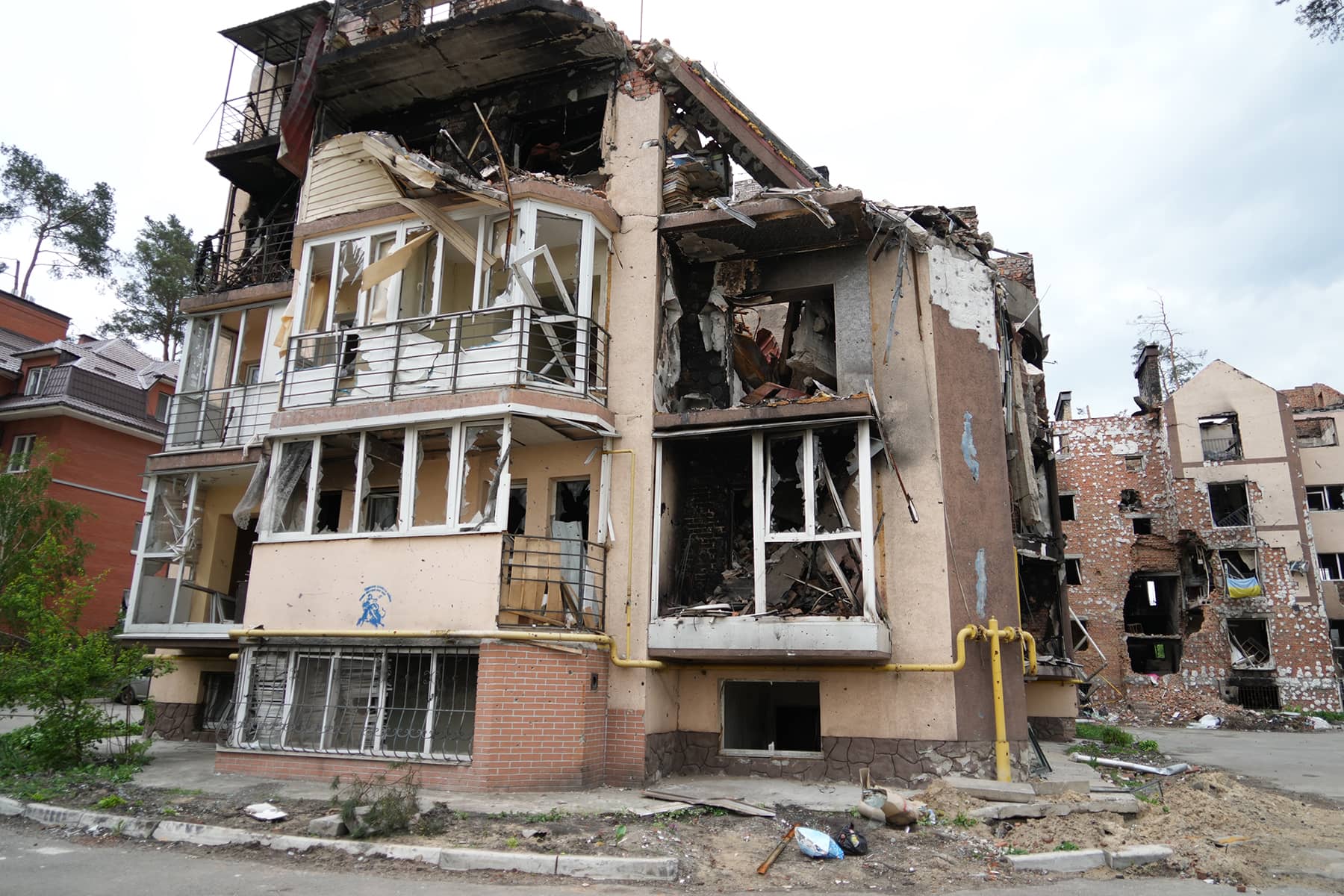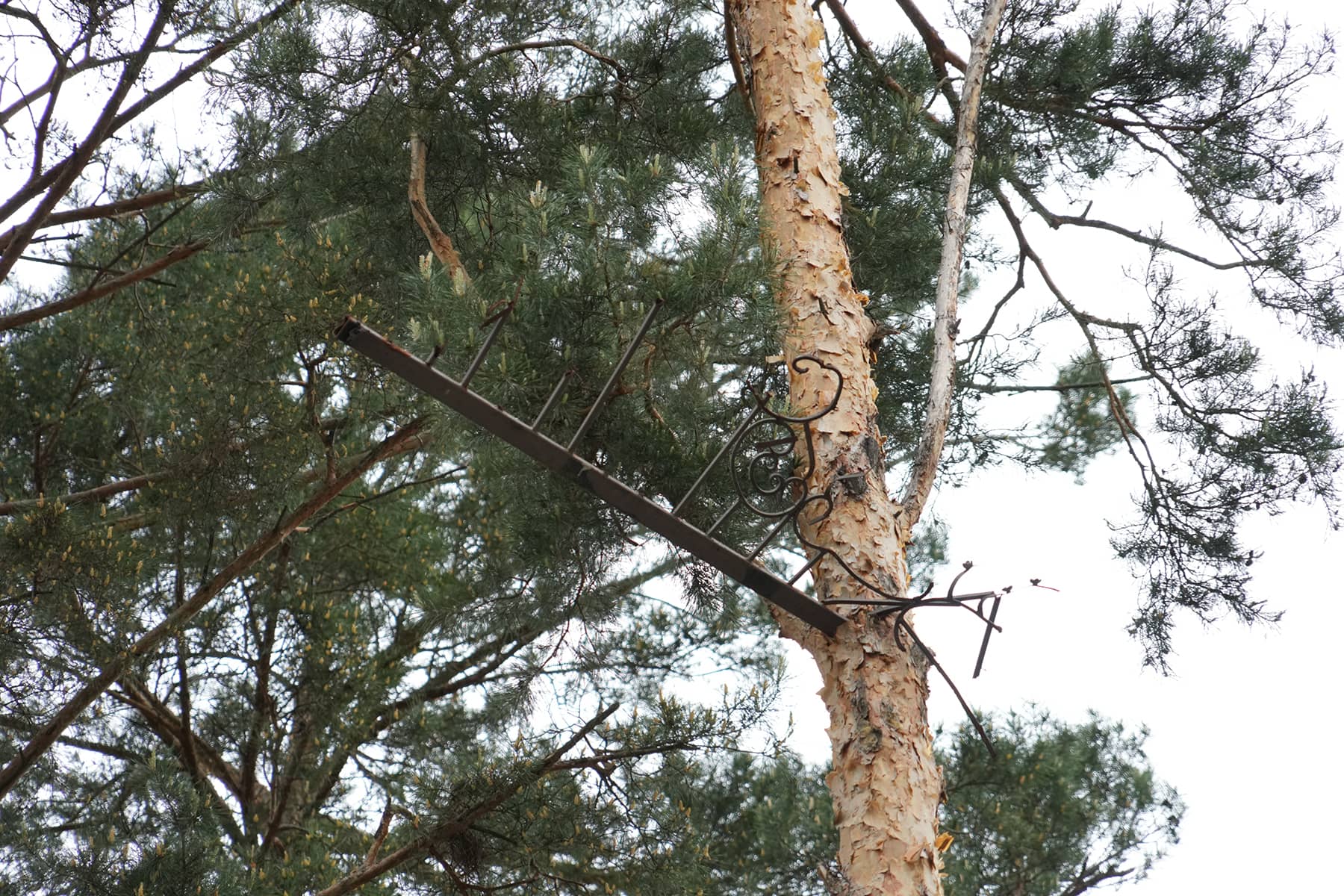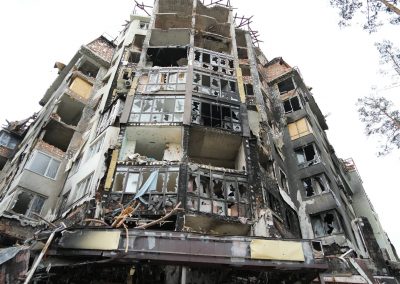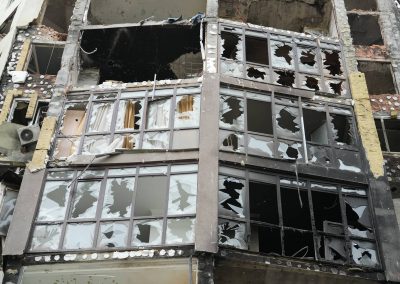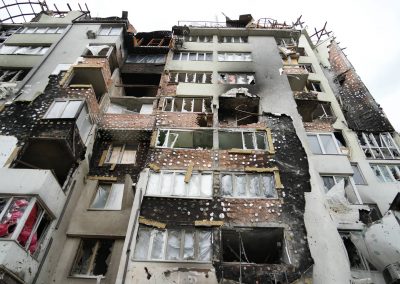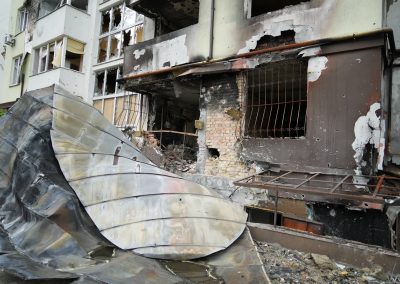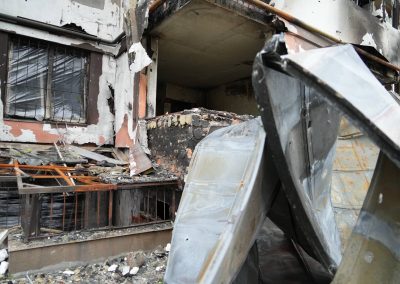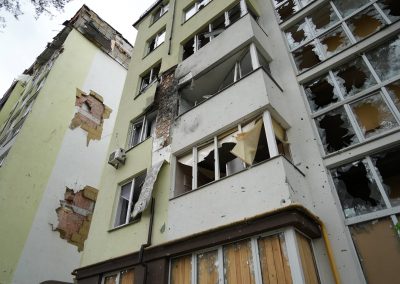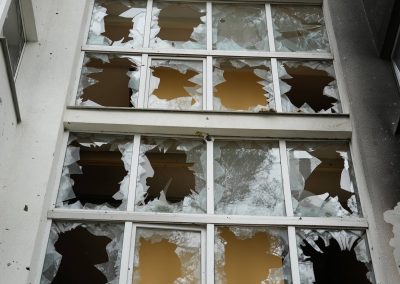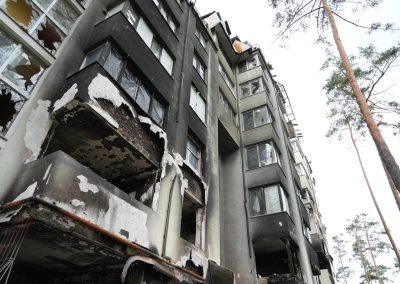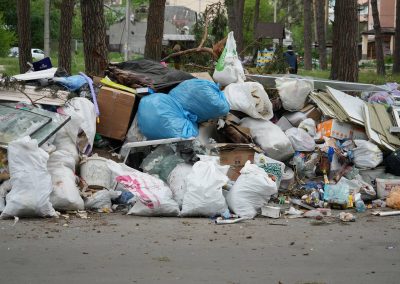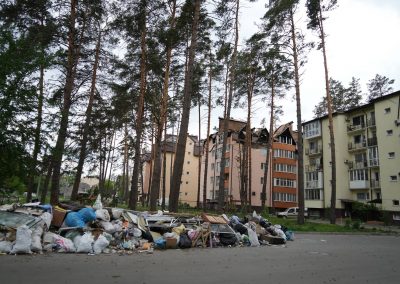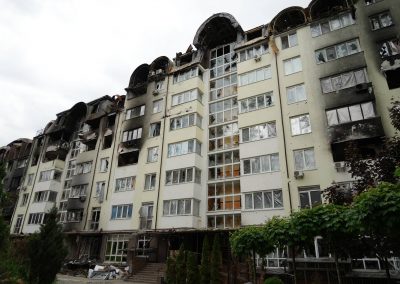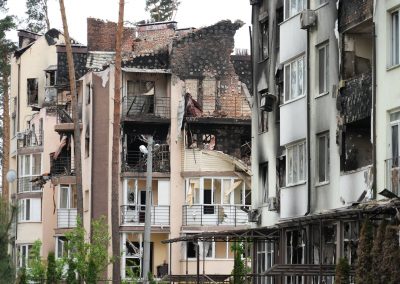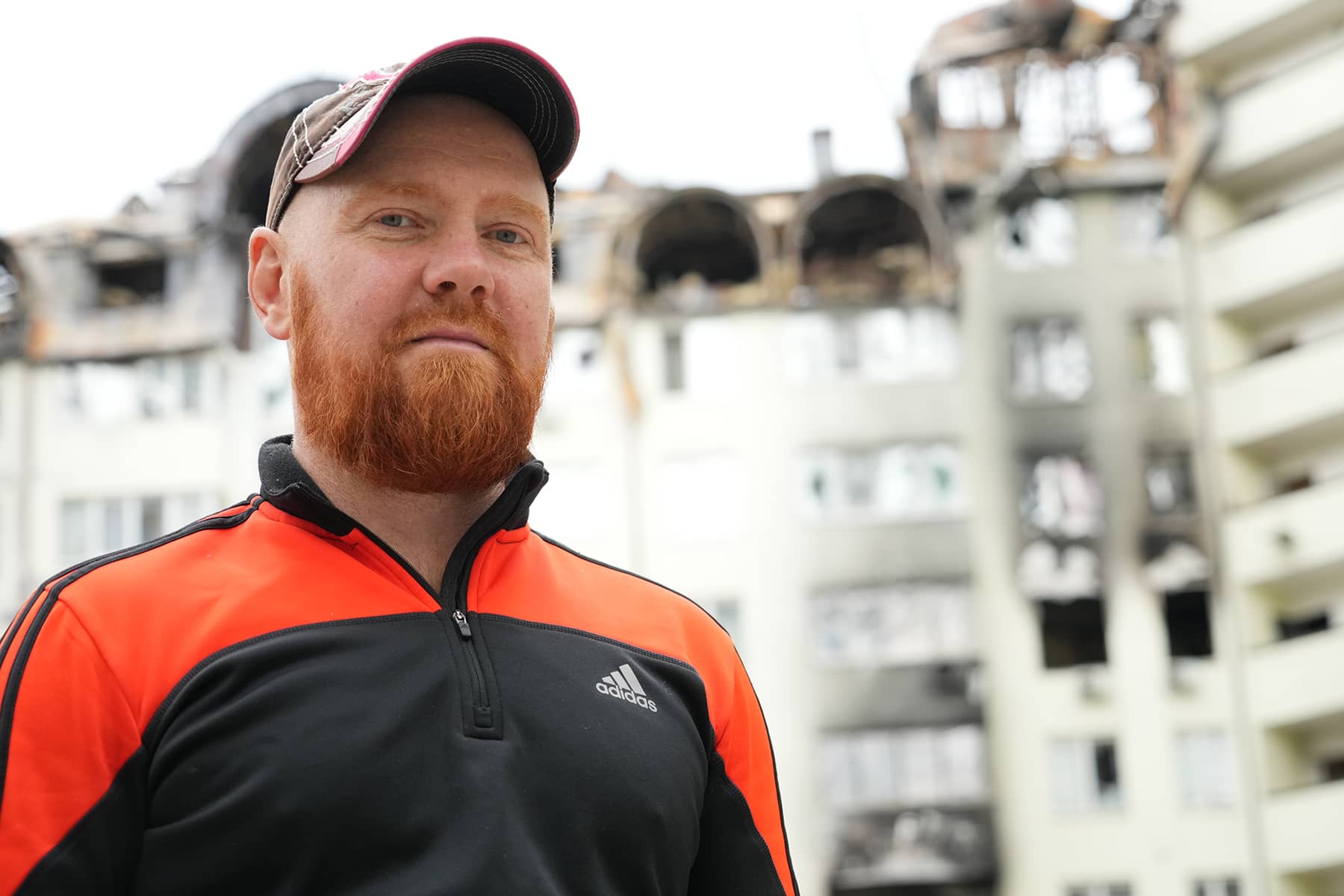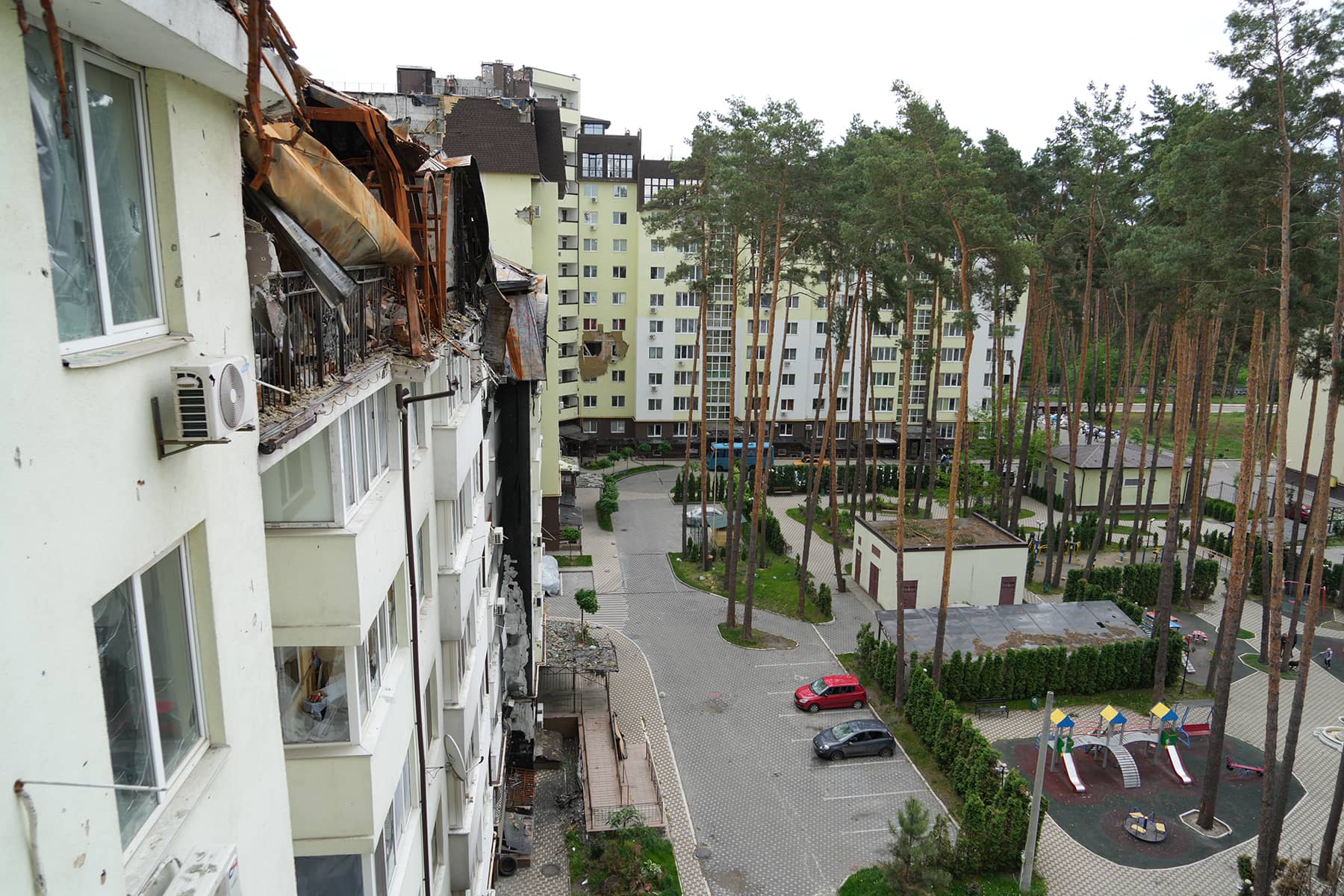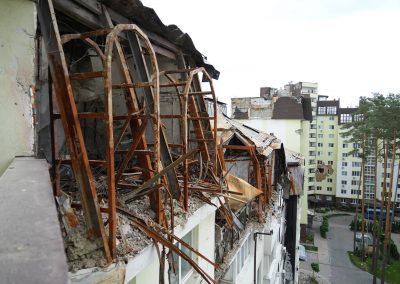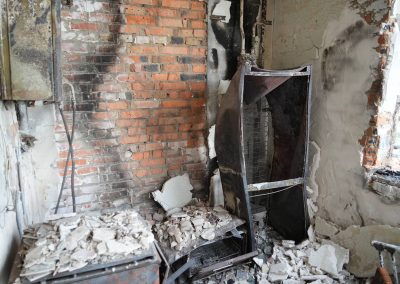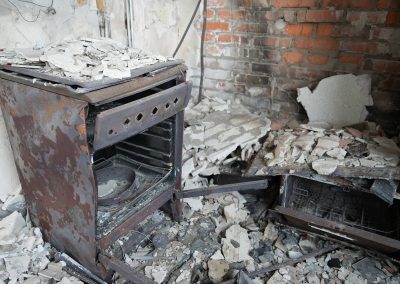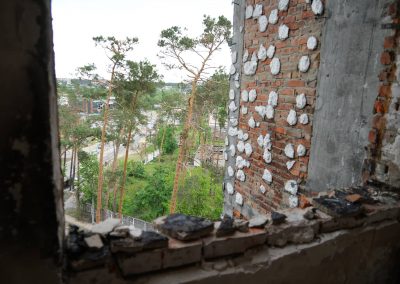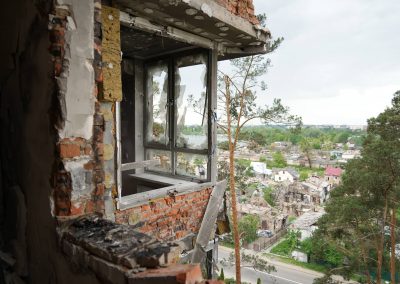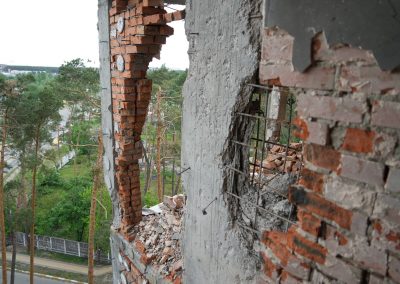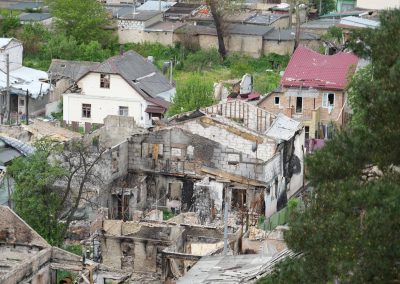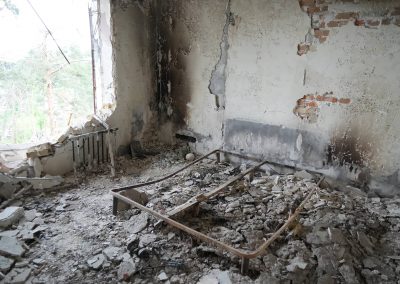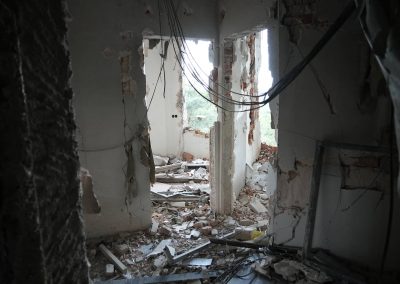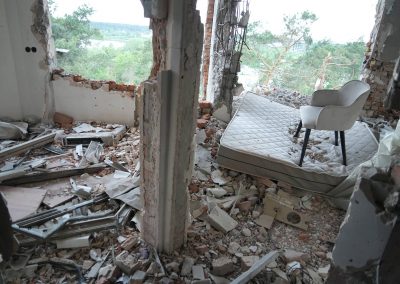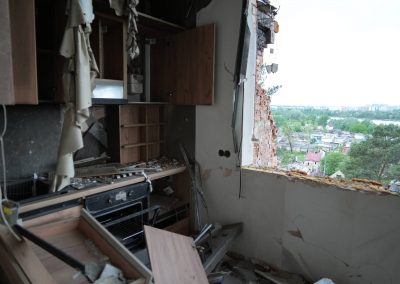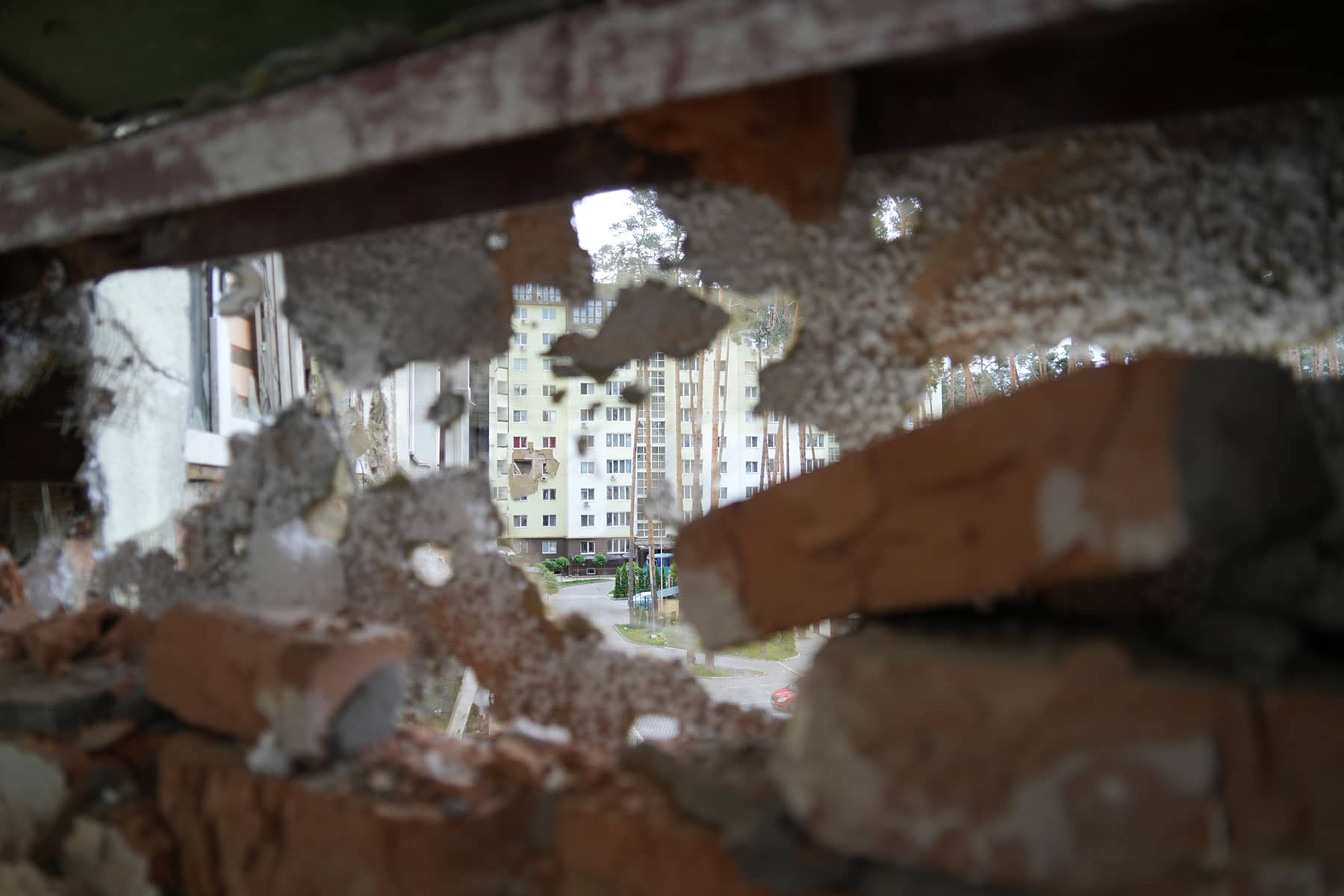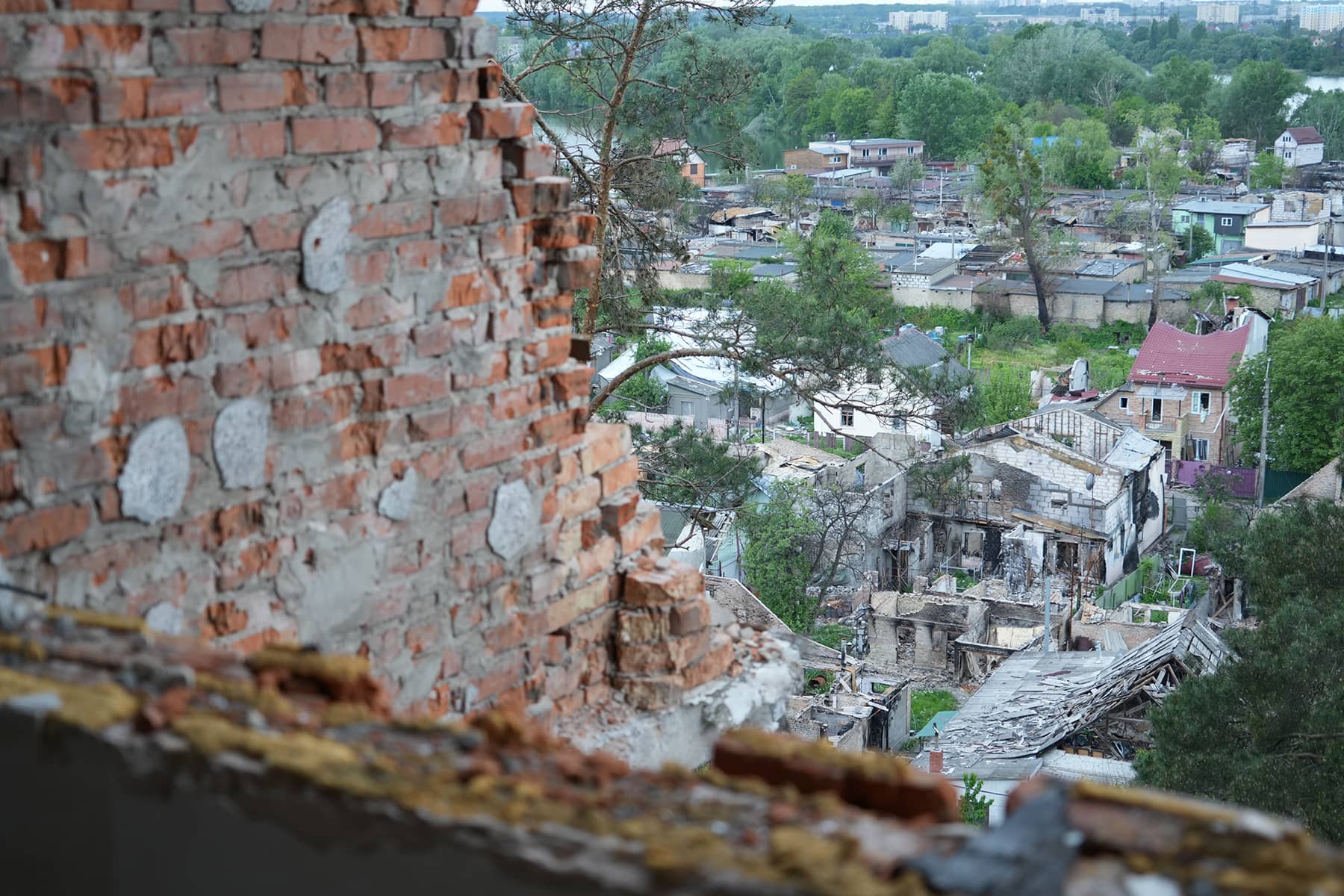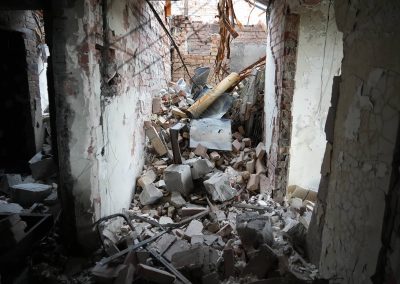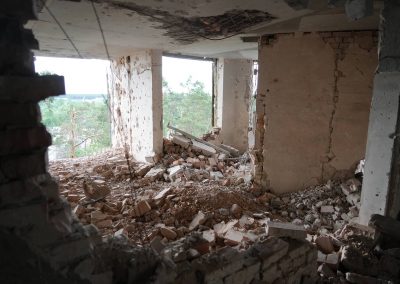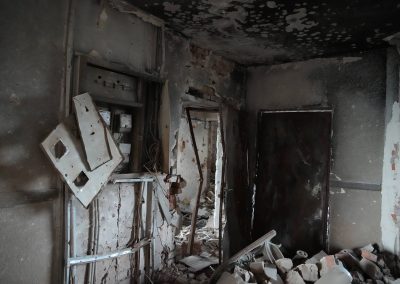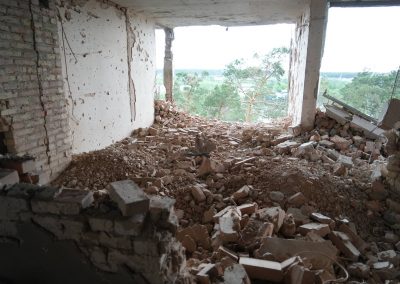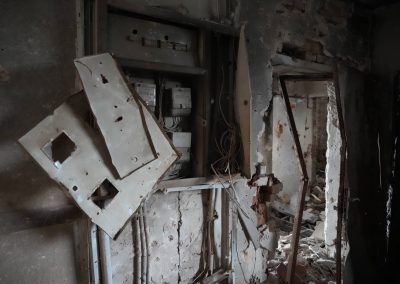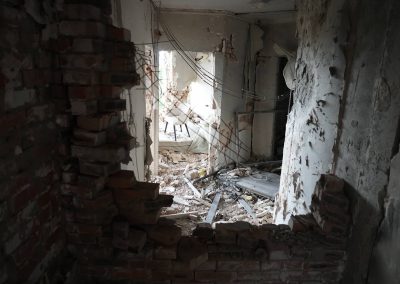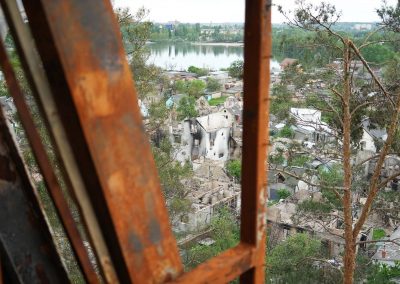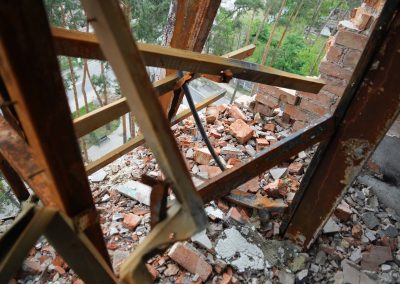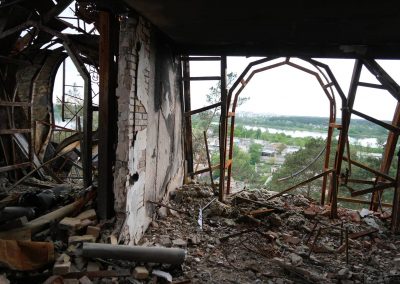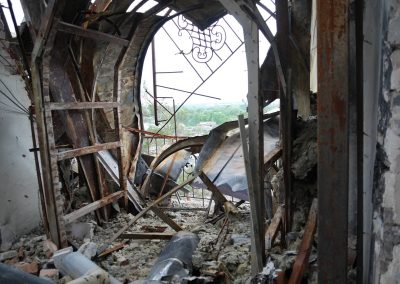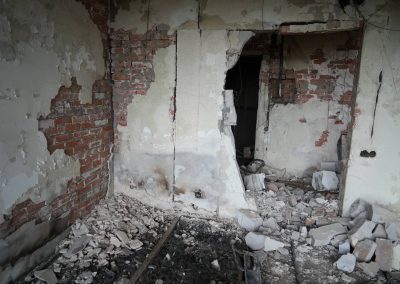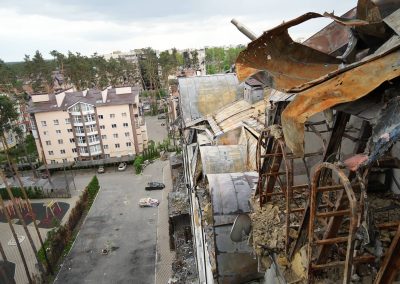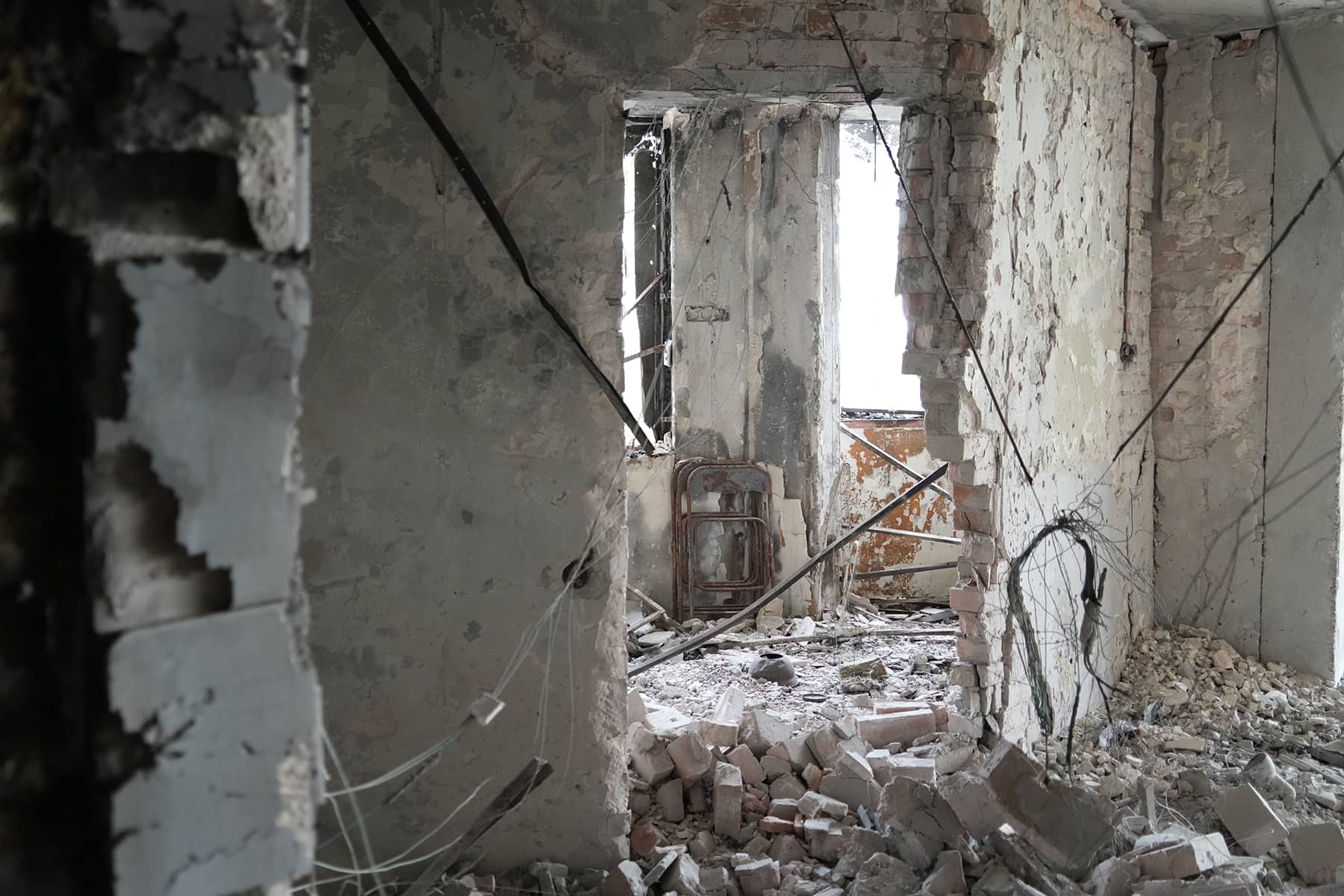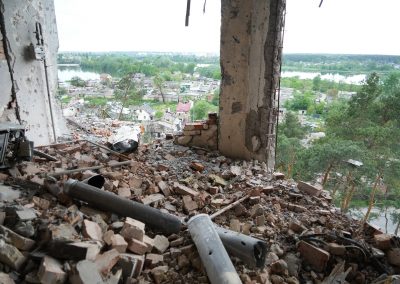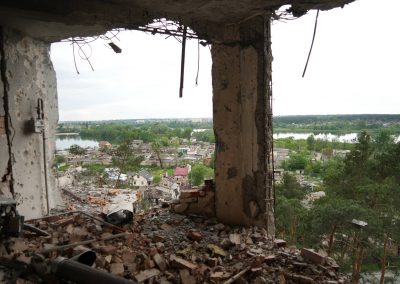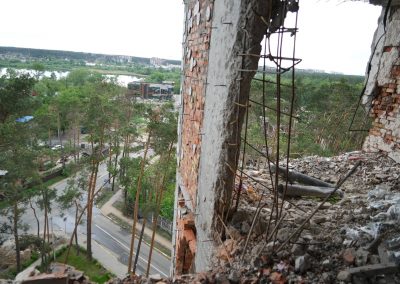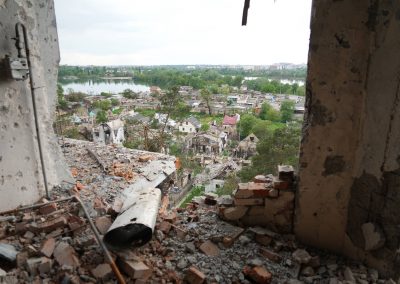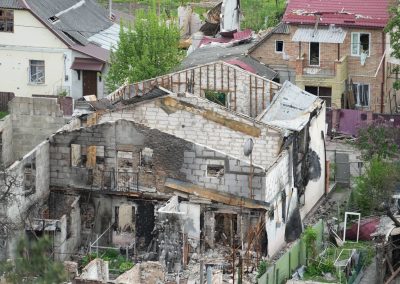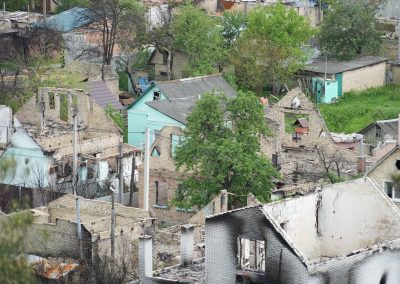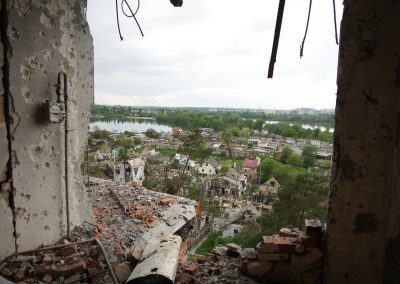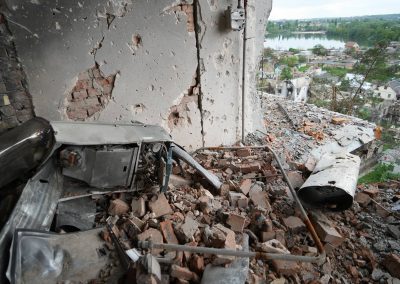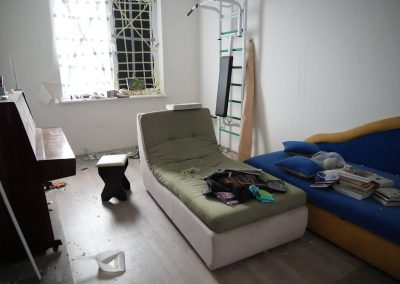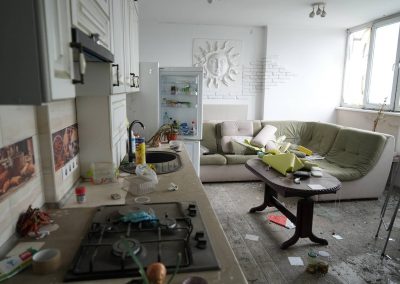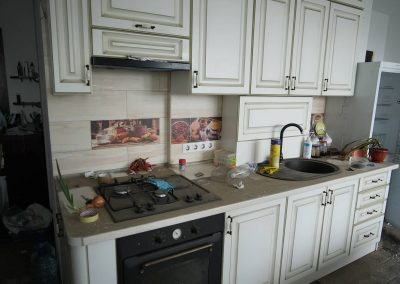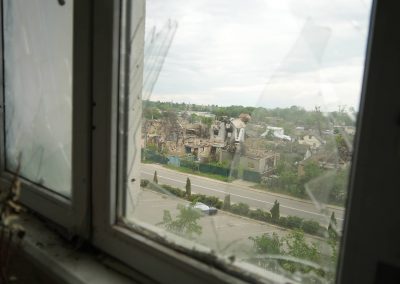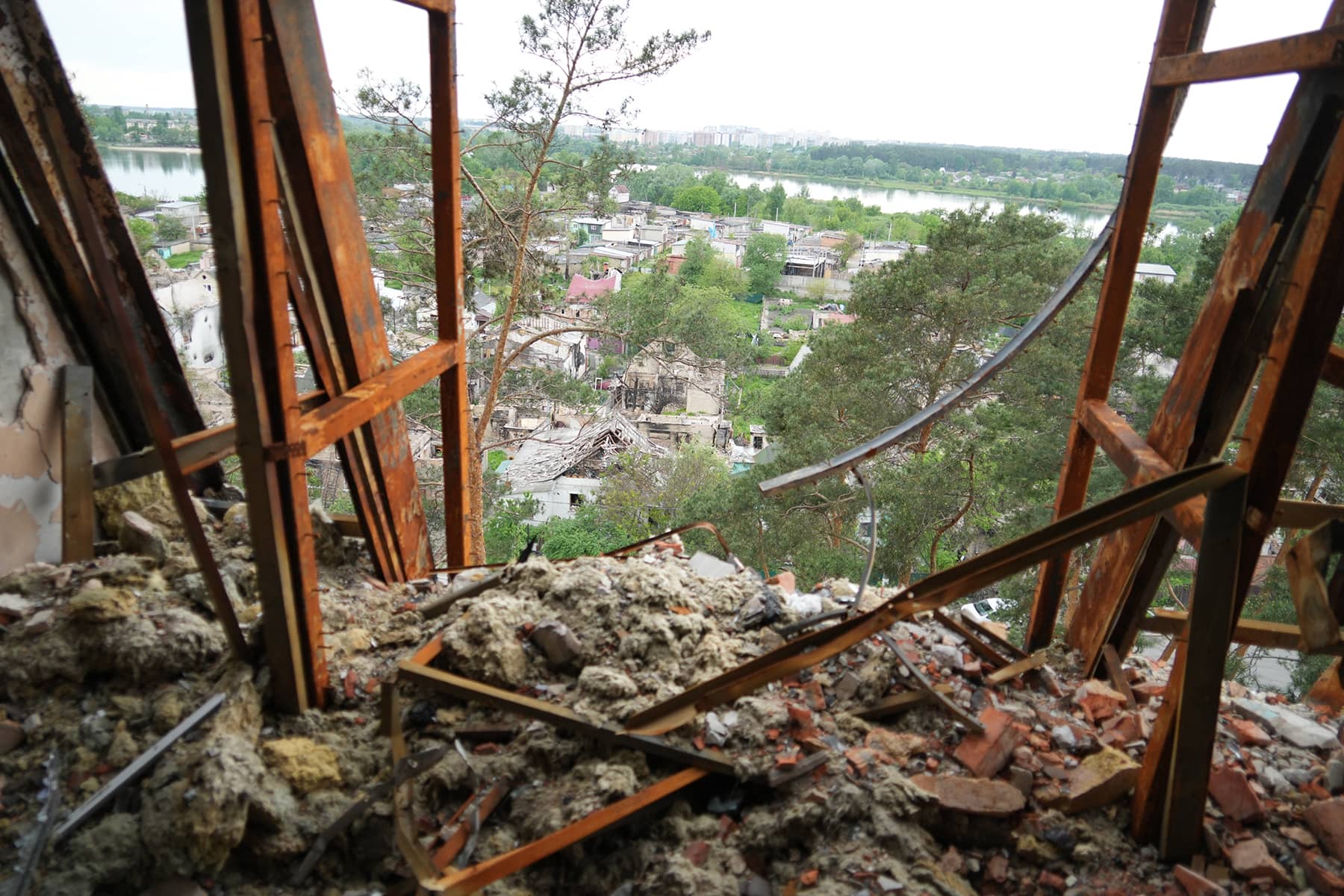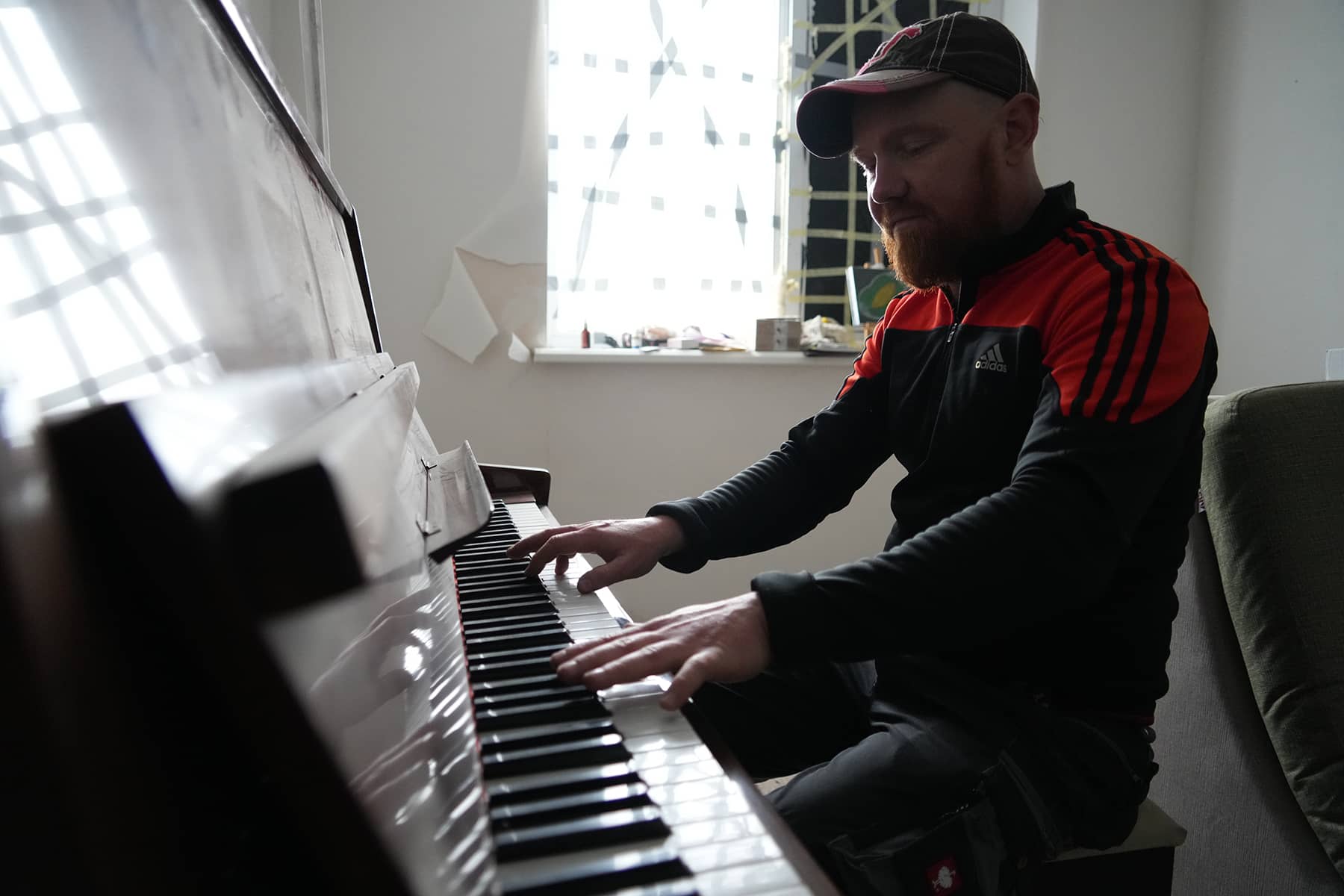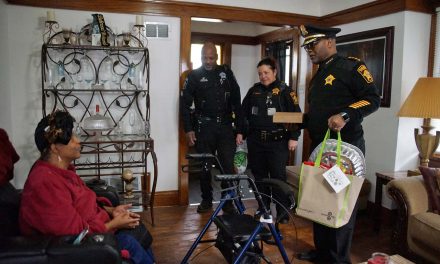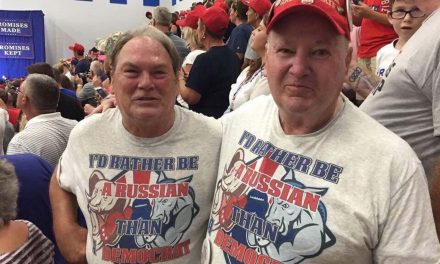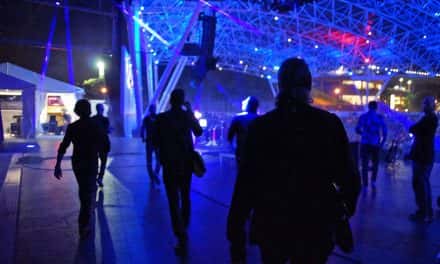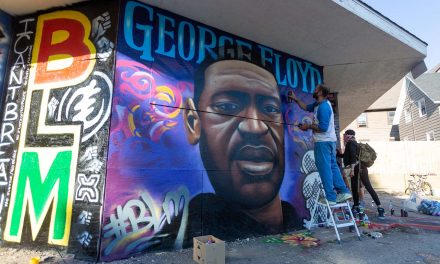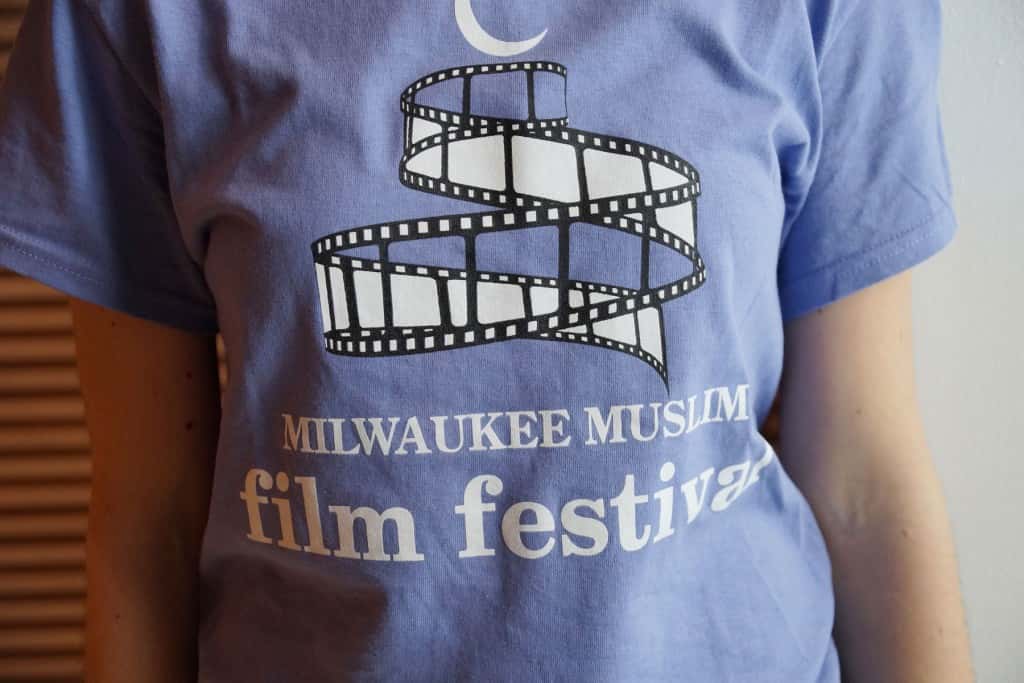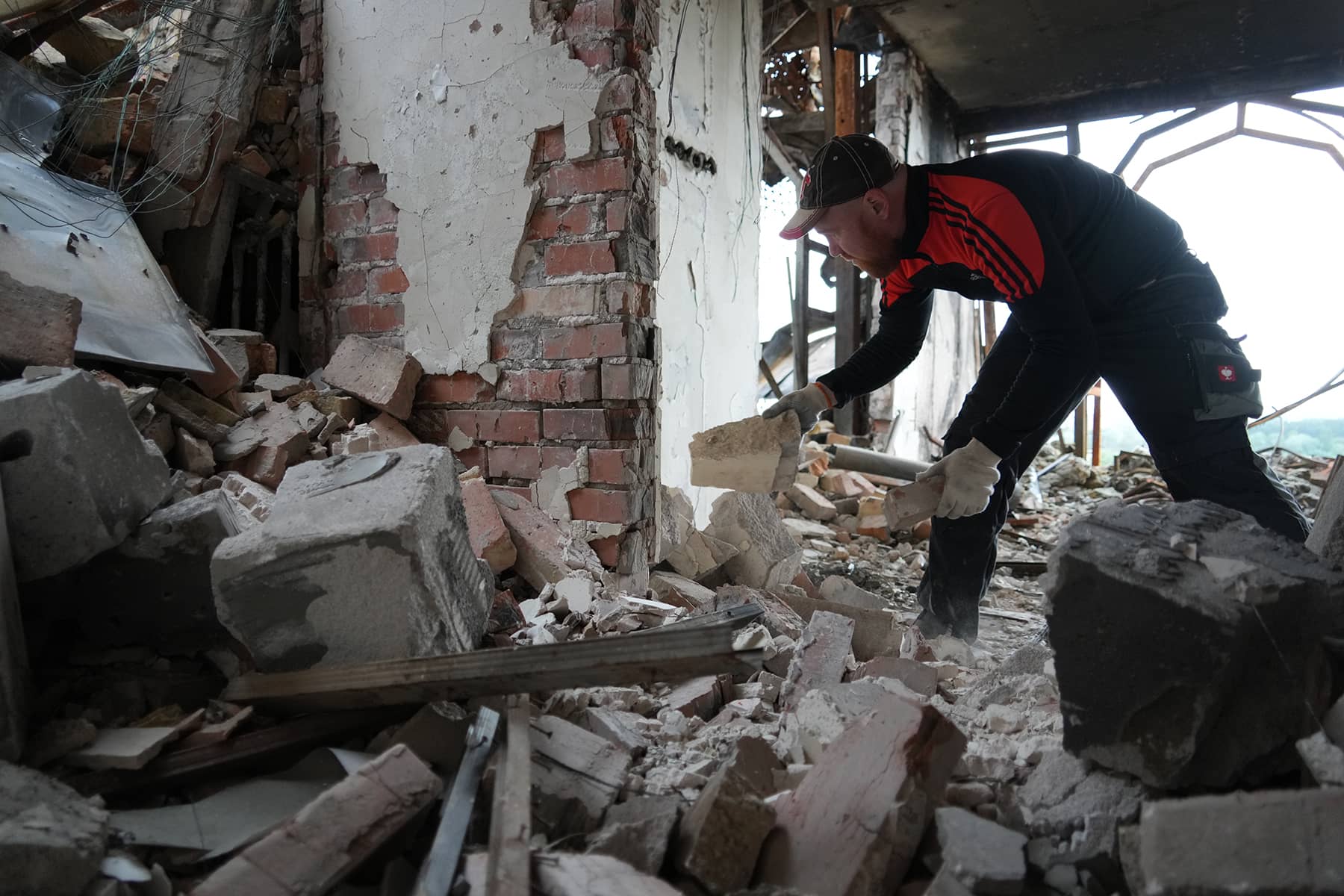
In the wave of Western nostalgia that enthralled Americans in the 1970s, “Remember the Alamo” became a pop cultural slogan when the 1954 series “Davy Crockett” was syndicated. The rally cry was seen as a symbol to avenge an injustice. At the time of the Battle of the Alamo, it served as a tactic to delay the Mexican Army, and eventually as a symbol to rally the rest of Texas to fight.
The Battle of Irpin and the Battle of Mariupol are Ukraine’s version of the Alamo. Both very different, but each of strategic importance and at great sacrifice. Both cities were essentially martyred to save the nation.
Although the city of Mariupol is now in Russian hands, it only recently fell after many weeks of bitter fighting. Continuous bombardment by Russian artillery flatted square miles of residential areas and killed tens of thousands of civilians. According to Putin’s propaganda, the goal of his invasion was to liberate Mariupol, with 90% of its population deeply connected to Russian language and culture.
What has gotten lost in reporting is that Putin unleashed a wave of genocide against the very population that least identified with Ukraine. Considering the dictator’s history of lies, it quickly became clear that liberation was never his true goal. By controlling Mariupol, Russia solidified its land bridge to Crimea.
But the fight for control of Mariupol served as source of moral for Ukrainians. It was seen as a modern day Thermopylae, where the 300 Spartans held back an empire. What has also been overlooked in the aftermath of the city’s fall is the strategic importance it played. For two months, Russian troops were tied up along with their resources. It meant that they could not be deployed elsewhere. That gave other areas a better fighting chance, specifically in Irpin.
Much like the rural Wisconsin roads that connect small towns across the state, Ukraine has a similar road system. There are a couple major highway networks, but nearly all routes from town to town are simple two lane roads. That was why the Russians had only one major route from Belarus to Kyiv. The distance and Ukrainian resistance proved too much for the inept military logistics of the Russian military.
The early Russian success was short lived, as the world watched its 40-mile-long military convoy grind to a halt and sustain overwhelming damage. Part of what bottlenecked the convoy was Irpin and its defense. The Russian invasion force came to a halt, and unable to press forward sought to destroy anything and everything in range of its guns.
Along the Hostomel Highway, where the municipal boarders of Bucha and Irpin meet, sustained some of the highest concentrations of destruction in Kyiv Oblast. But like Mariupol, Irpin traded small bits of land for precious time. Time to deploy weapons from America and Europe, time to drain Russian resources, and time to mass a counterattack that eventually forced the mighty Russian military into a disgraced retreat.
When the Milwaukee Independent team arrived in Irpin, we visited the Comfort Life real estate development. It had become an iconic area, because the destruction there was featured in some of the first war photos to circulate the world.
Residents of the complex showed us their collection of Russian ordinance, all recovered from the area. Russian boobytraps and mines had been cleared out weeks before, but there remained a danger due to the massive area of destruction. From the items collected out of the ruins that were once residential homes, there was significant evidence of Russian war crimes. Much of the ammunition was considered illegal to use in warfare, especially against unarmed civilians.
One resident, Dima, said he spent part of each day sifting through the devastated apartments in his housing complex, looking for Russian explosives. His own home had escaped destruction, but it was still badly damaged and without basic utilities. Dima had not been home when the Russians invaded and shelled the area. After the city was liberated and he returned, he found that enemy soldiers had looted his precious belongings.
In early May, about 120 architects from all over Ukraine arrived in Irpin to draft a strategy for the town’s redevelopment. Like Bucha, Borodyanka, Hostomel, and other martyred towns, Irpin was destroyed in only the span of a month. It will take much longer and require vast resources for all of Ukraine’s war-wrecked towns to fully recover.
And even though the war has been over in Irpin for weeks, the destruction did not automatically heal. While life has been improving, residents continue to live among the mess. They wait for the day to rebuild their town and return to a normal existence.
© PHOTO NOTE: All the original editorial images published here have been posted to the Facebook page of Milwaukee Independent. That collection of photos contains the MI copyright and watermark for attribution, and may be used for private social media sharing. Do not download and share images directly from this page. mkeind.com/facebook
Series: Reports from Ukraine
- Reports from Ukraine: Traveling from Milwaukee to a country at war just to take a vacation from America
- Images from Ukraine: Latino artist travels to Irpin to paint mural inspired by "Echoes of Guernica"
- Images from Ukraine: Irpin residents welcome reissue of Russian Warship Stamp as latest sign of victory
- Stories from Ukraine: Wandering in the ruins of a shattered life after surviving Russia's invasion
- Images from Ukraine: Similar to the Alamo, martyred cities bought precious time to save a nation
- Stories from Ukraine: Tent camp offers shelter for displaced residents until Irpin can rebuild lost homes
- Images from Ukraine: Graveyards of Russian war machines show the scale of Putin's failure to seize Kyiv
- Images from Ukraine: Following the invasion convoy's 40-mile route and exploring an abandoned base
- Stories from Ukraine: Illegal weapons and proof of Russian War Crimes easily seen along streets of Irpin
- Images from Ukraine: How Irpin’s cemetery processed the staggering massacre of its local citizens
- Stories from Ukraine: Healing remains slow as Borodyanka residents recover from occupation
- Images from Ukraine: The deep scars of war remain visibly etched across the landscape of Borodyanka
- Interview with Oleksandr Markushin: Mayor of Irpin and the hero of a Hero City
- A Meeting of Sister Cities: Former and current Mayors of Irpin ask Milwaukee's business community for help
- Stories from Ukraine: Having a shared purpose helped Irpin's leaders protect the city and stop the invaders
- Stories from Ukraine: How Milwaukee helped a bakery feed hungry survivors in Bucha with fresh bread
- Stories from Ukraine: Bucha resident recalls how Russians turned neighborhood into a street of death
- Stories from Ukraine: How a mass grave of executions overshadowed accountability from Bucha’s leadership
- Images from Ukraine: Putin’s attack on Babyn Yar is a painful reminder of the broken vow of “Never Again”
- Images from Ukraine: An unexpected encounter with Jewish history and the bloody legacy of persecution
- Images from Ukraine: Listening to timeless voices of ethnic heritage etched in stone at Lychakiv Cemetery
- Images from Ukraine: The experience of attending a military funeral in Kyiv while children died in Uvalde
- Images from Ukraine: Stepping out of the fog of war to see the beauty of faith in ancient places of worship
- Images from Ukraine: The cities of Kyiv and Lviv were divided by history but remain united in identity
- Stories from Ukraine: Anya Nakonechna shares why the Lviv Opera is a symbol of her nation’s culture
- Images from Ukraine: A folk village where visitors can experience the life of past generations
- Images from Ukraine: Signs of renewal sprout from under Irpin’s rubble as city looks to the future
Lее Mаtz
Lее Mаtz
Milwaukee Independent editorial team for this special series: (UKRAINE) Lee Matz, photojournalist; Oleh Pinta, translator / reporter; Yaroslav Zdyrko, security / videographer; (MILWAUKEE) Halyna Salapata, logistics / translations.
Milwaukee Independent has reported on the situation in Ukraine since it was invaded on February 24. Coverage originally began with reactions and rallies from the local Ukrainian American community, and relationships with Milwaukee’s sister city of Irpin. Through partnerships and good journalism, sources were developed that enabled Milwaukee Independent to publish developments about the unprovoked war in realtime. In late May, a team from Milwaukee Independent spent nearly two weeks on the ground in Ukraine. The award-winning daily news magazine was the first and, at the time, only media organization to send staff into the country since the war began.
Reports from Ukraine: An extensive news series by Milwaukee Independent from a country at war

